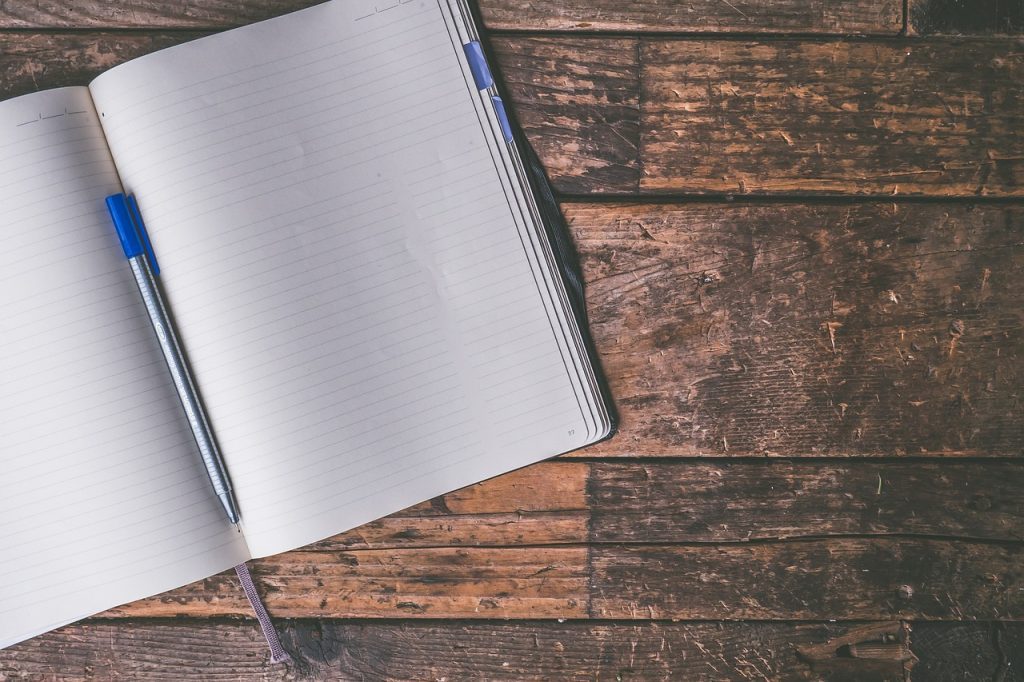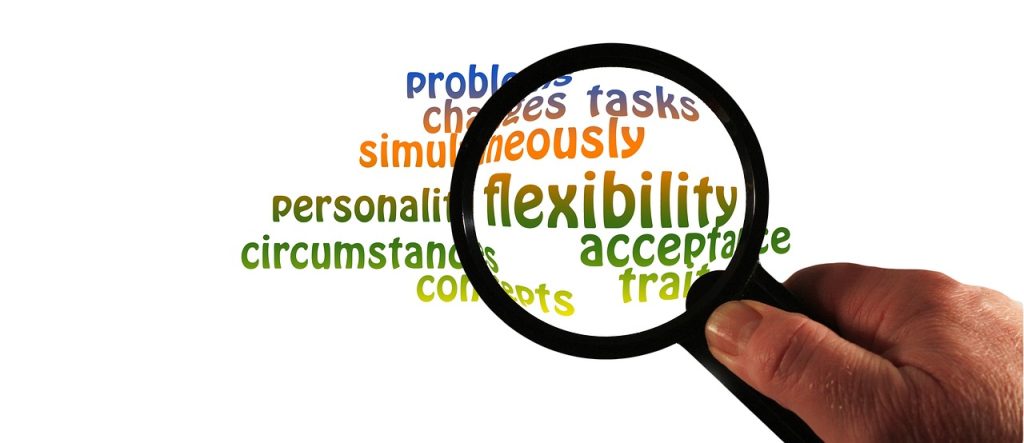Self-awareness is the ability to recognise and understand one’s own thoughts, feelings, and behaviours. It is a critical component of emotional intelligence, and is essential for personal growth and development. By improving self-awareness, individuals can gain a better understanding of their strengths and weaknesses. They can also develop strategies to improve their relationships and overall well-being.
Recognising and Understanding Your Own Emotions
Recognising and understanding one’s own emotions is a critical component of emotional intelligence. By being able to identify and understand one’s own emotions, you can better manage your feelings. You can also make more informed decisions, and develop stronger relationships with others.
Understanding One’s Own Emotions
- Identify triggers: One of the first steps in recognising and understanding one’s own emotions is to identify the things that trigger different emotions. Triggers can be external, such as a particular situation or event, or internal, such as a particular thought or memory. By identifying triggers, individuals can gain a better understanding of what causes different emotions to arise.
- Label emotions: Once triggers have been identified, it can be helpful to label different emotions as they arise. This can involve simply naming the emotion, such as “frustration,” “anger,” or “anxiety.” By labelling emotions, individuals can gain a better understanding of what they are feeling and why.
- Practice self-reflection: Taking time each day to reflect on one’s own thoughts and emotions can be a powerful tool for developing self-awareness. This can involve asking oneself questions such as “What am I feeling right now?” or “What caused me to feel this way?”. By reflecting on one’s emotions, individuals can gain a better understanding of their own patterns of behaviour and thought.
- Consider the context: When trying to understand one’s own emotions, it is important to consider the context in which they are occurring. For example, an individual may feel anxious before giving a presentation, but this anxiety may be normal given the circumstances. By considering the context, individuals can gain a better understanding of what emotions are appropriate in different situations.
- Seek support: Sometimes, understanding one’s own emotions can be difficult, especially if they are intense or overwhelming. Seeking support from a trusted friend, family member, or mental health professional can be helpful in gaining a better understanding of one’s own emotions.
Summary
Improving one’s ability to recognise and understand one’s own emotions requires ongoing effort and commitment. It can be a challenging process, as it requires individuals to be honest and vulnerable with themselves. However, the benefits of improving emotional self-awareness are numerous and can lead to improved relationships, greater personal growth and development, and a greater sense of overall well-being.
Recognising and understanding one’s own emotions is a critical component of emotional intelligence. Strategies for improving emotional self-awareness include identifying triggers, labelling emotions, practising self-reflection, considering the context, and seeking support. By improving emotional self-awareness, individuals can better manage their feelings, make more informed decisions, and develop stronger relationships with others.
Strategies for Improving Self-Awareness

Practising Mindfulness
Mindfulness is the practice of being present in the moment, without judgement, and fully experiencing one’s surroundings and sensations. It can help to reduce stress, anxiety, and depression, and increase overall well-being. Here are some strategies for practising mindfulness:
- Start small: Practising mindfulness doesn’t require hours of meditation each day. Start with just a few minutes of mindfulness practice each day, and gradually work up to longer periods of time as you become more comfortable with the practice.
- Find a quiet space: Choose a quiet space where you won’t be distracted by external stimuli. Turn off your phone and any other devices that may interrupt your practice.
- Focus on your breath: Focus your attention on your breath, noticing the sensations of each inhalation and exhalation. You may find it helpful to count your breaths, starting with one on the inhale and counting up to ten, then starting over again.
- Notice your thoughts: When thoughts or distractions arise, simply notice them without judgement, and then return your attention to your breath. Don’t get discouraged if your mind wanders frequently – this is a normal part of the practice.
- Use guided meditations: If you’re new to mindfulness practice, you may find it helpful to use guided meditations to help you stay focused and engaged. There are many free guided meditations available online or through smartphone apps.
- Practice regularly: Consistency is key to developing a mindfulness practice. Try to practise mindfulness daily, even if it’s just for a few minutes.
- Bring mindfulness into everyday activities: Mindfulness can be practised in many everyday activities, such as washing dishes or taking a walk. Focus your attention on the sensations of the activity and try to stay present in the moment.
- Be patient and kind with yourself: Mindfulness practice takes time and patience. Don’t get discouraged if you don’t notice immediate results. Be kind and patient with yourself, and remember that the benefits of mindfulness practice can take time to manifest.
Summary
Practising mindfulness can help to reduce stress, anxiety, and depression, and increase overall well-being. Strategies for practising mindfulness include starting small, finding a quiet space, focusing on your breath, noticing your thoughts, using guided meditations, practising regularly, bringing mindfulness into everyday activities, and being patient and kind with yourself. With consistent practice, mindfulness can become a powerful tool for improving your overall well-being and quality of life.

Keeping a Journal
Keeping a journal can be a great way to reflect on your thoughts and emotions, track your progress toward goals, and cultivate a sense of gratitude and mindfulness. Here are some tips for keeping a journal effectively:
- Make it a habit: Schedule a regular time each day to write in your journal, whether it’s in the morning, before bed, or during a lunch break. Consistency is key to developing a journaling habit.
- Choose a format: Decide whether you want to keep a physical journal or use a digital platform. Both options have their advantages and disadvantages, so choose the format that works best for you.
- Keep it private: Your journal is a place for your personal thoughts and feelings, so it’s important to keep it private. Consider using a lockable journal or password-protected digital platform to keep your entries secure.
- Write freely: Don’t worry about spelling or grammar – just write freely and expressively. Use your journal as a safe space to explore your thoughts and emotions without judgement.
- Be specific: When writing about your thoughts and emotions, be specific and concrete. Describe how you’re feeling in detail, and try to identify the source of those feelings.
- Track your progress: If you’re using your journal to track progress toward goals, be specific about your goals and the steps you’re taking to achieve them. Note any setbacks or obstacles you encounter, as well as any strategies you use to overcome them.
- Practice gratitude: Take time each day to reflect on things you’re grateful for, whether it’s a good cup of coffee or a meaningful conversation with a friend. Gratitude journaling can help cultivate a more positive outlook on life.
- Review your entries: Periodically review your journal entries to identify patterns in your thoughts and emotions, track your progress toward goals, and reflect on your overall well-being.
Summary
Keeping a journal can be a valuable tool for reflection, goal-setting, and cultivating mindfulness and gratitude. To keep a journal effectively, make it a habit, choose a format that works for you, keep it private, write freely and specifically, track your progress, practice gratitude, and periodically review your entries. With consistent practice, journaling can become a powerful tool for personal growth and self-awareness.

Seeking Feedback from Others
Feedback is a crucial component of personal and professional growth. Seeking feedback from others can help you identify blind spots, gain new perspectives, and improve your skills and performance. However, it can be intimidating to ask for feedback, and receiving feedback can be difficult to hear. Here are some strategies for seeking feedback effectively:
- Choose the right people: When seeking feedback, choose people who are knowledgeable about the area you want feedback on and who you trust to give you honest feedback. This could be a mentor, supervisor, colleague, or friend.
- Be specific: When asking for feedback, be specific about the area you want feedback on. For example, instead of asking for general feedback on your performance, ask for feedback on a specific project or presentation.
- Ask open-ended questions: Instead of asking yes-or-no questions, ask open-ended questions that encourage discussion and reflection. For example, you could ask “What did you think worked well in my presentation?” or “What do you think I could have done differently?”
- Listen actively: When receiving feedback, listen actively and without judgment. Avoid becoming defensive or dismissive, and ask follow-up questions to clarify the feedback you’re receiving.
- Reflect on the feedback: After receiving feedback, take time to reflect on what you heard. Identify any patterns or themes in the feedback, and consider how you can use the feedback to improve your performance.
- Follow up: If you receive feedback that requires action, follow up with the person who gave you the feedback to let them know how you plan to address their suggestions.
- Show gratitude: Thank the person who gave you feedback for taking the time to share their thoughts and perspectives with you. Expressing gratitude can help build trust and strengthen relationships.
Summary
Seeking feedback from others can be a valuable tool for personal and professional growth. To seek feedback effectively, choose the right people, be specific, ask open-ended questions, listen actively, reflect on the feedback, follow up, and show gratitude. With practice, seeking and receiving feedback can become a valuable part of your personal and professional development.

Engaging in Self-Reflection
Self-reflection is the practice of looking inward to examine our thoughts, feelings, and behaviours. Engaging in self-reflection can help us identify areas for personal growth and development, gain new perspectives, and become more self-aware. Here are some strategies for engaging in self-reflection effectively:
- Schedule time for reflection: Set aside dedicated time each day or week for self-reflection. This could be as little as five minutes or as long as an hour, depending on your schedule and preferences.
- Create a quiet space: Choose a quiet, comfortable space where you won’t be interrupted. Turn off your phone or other distractions to minimise interruptions.
- Ask yourself questions: Ask yourself questions that encourage reflection, such as “What am I feeling right now?” or “What did I learn from this experience?” Write down your thoughts and observations.
- Practice mindfulness: Engage in mindfulness practices, such as meditation or deep breathing, to help quiet your mind and become more present in the moment. Mindfulness can help you become more aware of your thoughts and feelings.
- Use prompts: Use prompts or guided questions to help you focus your self-reflection. For example, you could use prompts like “What am I grateful for today?” or “What did I accomplish this week?”
- Be honest with yourself: Be honest and authentic with yourself during self-reflection. Avoid judgement or criticism, and focus on observing and understanding your thoughts and emotions.
- Reflect on both successes and challenges: Reflect not only on your successes but also on your challenges and failures. Consider what you learned from difficult experiences and how you can use those lessons to grow and improve.
- Take action: Use your self-reflection to identify areas for personal growth and development, and take action to address them. This could involve setting goals, seeking feedback from others, or engaging in learning and development activities.
Summary
Engaging in self-reflection can help us become more self-aware and identify areas for personal growth and development. To engage in self-reflection effectively, schedule time for reflection, create a quiet space, ask yourself questions, practice mindfulness, use prompts, be honest with yourself, reflect on both successes and challenges, and take action. With practice, self-reflection can become a valuable tool for personal and professional growth.

Taking Personality Traits and Preferences Assessments
Taking assessments that measure personality traits and preferences can be a useful tool for personal growth and self-awareness. These assessments can help you identify your strengths, weaknesses, and preferences, and provide insight into your behaviour, communication style, and decision-making processes. Here are some tips for taking assessments concerning personality traits and preferences:
- Choose the right assessment: There are many different assessments available that measure personality traits and preferences, such as the Myers-Briggs Type Indicator (MBTI), the Big Five Personality Traits, and the DiSC assessment. Research different assessments and choose one that is reputable, well-established, and relevant to your goals.
- Take the assessment seriously: To get the most accurate results, take the assessment seriously and answer the questions honestly. Avoid overthinking or trying to provide answers you think are “right” – instead, focus on answering the questions based on your true thoughts, feelings, and behaviours.
- Interpret the results: After completing the assessment, review the results and interpret them in the context of your personal and professional goals. Identify your strengths and weaknesses, and consider how you can use your strengths to achieve your goals and improve your weaknesses.
- Seek feedback: Share your assessment results with others and seek feedback on how your personality traits and preferences manifest in your behaviour and communication style. This can help you identify blind spots and areas for improvement.
- Use the results to guide personal and professional growth: Use the results of the assessment to guide your personal and professional growth. Set goals based on your strengths and weaknesses, seek opportunities to use your strengths, and engage in learning and development activities that address your weaknesses.
- Revisit the assessment periodically: Revisit the assessment periodically to track your progress and see how your personality traits and preferences may have evolved over time.
Summary
Taking assessments that measure personality traits and preferences can be a valuable tool for personal and professional growth. To take these assessments effectively, choose the right assessment, take the assessment seriously, interpret the results, seek feedback, use the results to guide personal and professional growth, and revisit the assessment periodically. With practice, taking assessments can become a valuable part of your self-awareness and personal growth journey.
Improving self-awareness requires ongoing effort and commitment. It can be a challenging process, as it requires individuals to be honest and vulnerable with themselves. However, the benefits of improving self-awareness are numerous and can lead to improved relationships, greater personal growth and development, and a greater sense of overall well-being.
Wrapping Up Improving Self-Awareness
In conclusion, improving self-awareness is a critical component of emotional intelligence, and is essential for personal growth and development. Strategies for improving self-awareness include practicing mindfulness, keeping a journal, seeking feedback from others, engaging in self-reflection, and taking assessments. By improving self-awareness, you can gain a better understanding of your own thoughts, feelings, and behaviors. You can also develop strategies to improve your relationships and overall well-being.
This article stems from a post we wrote about emotional intelligence. If you’d like to read that post, head over here. Also, if you’re interested in how to improve your life in general and start living the life you deserve, our blog has many posts that may help.
Read More
- The Connection Between Manifestation and Gratitude
- Manifestation – Universal Energy, Visualisation, and Gratitude
- The Power of Having a Positive Mental Attitude
- Gynecomastia – The Causes, Symptoms, and Treatments
- The Importance of Eyelashes and Eyebrows
Disclaimer: The information provided on Healthy Lifestyles for All is intended for general educational purposes only and should not be considered as medical advice. Please consult with your GP or other health professional before making any significant changes to your diet, exercise routine, or any other aspect of your lifestyle. We are not responsible for any adverse effects or consequences resulting from the use of the information provided on our blog.
Comments: I hope you enjoyed reading this post as much as I enjoyed writing it. If you liked it, please leave a comment. If you didn’t like it, disagree with something I have written (I’m okay with that), or think I got something wrong (that’s okay too), please leave a comment as well. We only truly learn from our mistakes, so I am happy to have mine pointed out.
Affiliate Links: Please also note that I may make a small amount of money if you buy one of the products I recommend in any of my blog posts. Rest assured that I have done my own due diligence, and only recommend products that have been tried and tested, and have extremely good feedback. Additionally, many of the products I recommend have 30 or 60-day money-back guarantees, so you can buy in the confidence that if a particular product is not right for you, you can get a refund.

